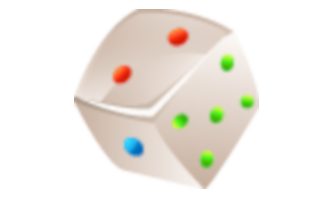Mirrors and lenses
Science, Grade 6
Mirrors and lenses
Study Guide

Mirrors and lenses
Flash Cards

Mirrors and lenses
Quiz

Mirrors and lenses
Worksheets

Mirrors and lenses
Games

Study Guide Mirrors and lenses Science, Grade 6
❮
1
/
3
❯
MIRRORS AND LENSES Overview The reflection of light can occur in different ways. Since a mirror has a very smooth surface, all the light bouncing off of a mirror reflects in a regular manner. In a plane or flat smooth mirror, the image that forms is virtual which means it doesn’t really exist. In the picture below, while the image is the same size as the object and is upright like the object, its left and right sides are reversed and it seems to be behind the mirror. LESSON CHECKPOINT: How does light reflect off of a plane mirror and what kind of image forms as a result? When light hits a concave or bowl-like mirror, the image that forms can be either virtual or real. A real image is one that looks upside down and can be smaller or larger than the object. Whether the image is virtual or real depends on how far the object is from the concave mirror. LESSON CHECKPOINT: What kinds of images form off of a concave mirror? © Copyright NewPath Learning. All Rights Reserved. Permission is granted for the purchaser to print copies for non-commercial educational purposes only. Visit us at www.NewPathLearning.com.
Light Refraction Refraction or the bending of light occurs when light enters at an angle through a different medium The refraction of light through a lens can have much different results depending on whether the lens is convex or concave. A convex lens is thicker in the center than it is at the ends and a concave lens is just the opposite. In the diagram below, notice how the light coming through the convex lens creates a focal point or point of convergence for the light. With the concave lens, the light rays get spread out and never form a focal point. The result of this is that convex lenses can form either real or virtual images depending on how far the object is from the lens. On the other hand, since light rays passing through a concave lens never meet, the image formed is always virtual. © Copyright NewPath Learning. All Rights Reserved. Permission is granted for the purchaser to print copies for non-commercial educational purposes only. Visit us at www.NewPathLearning.com.
Human Vision Without our eyes and brain, vision would not be possible. The eye, shown below, takes in light through the small opening in the eye called the pupil. The light then goes through a convex lens (C) where it is focused exactly on the retina (A). Here, many sensitive nerve endings take the focused light image and convert it to a nerve message (B) which goes to the vision center in the brain. The brain interprets this nerve impulse as a vision. LESSON CHECKPOINT: What type of lens do we have in each eye? Practical Applications The reflection and refraction of light with mirrors and lenses has many practical applications. • Telescopes use a combination of mirrors and lenses to see distant objects • Microscopes use a combination of two lenses to magnify a small, close object. • Cameras use lenses to focus images to record on film or in digital format. • Without lenses or mirrors, lasers use coherent light of only one wavelength to create precise beams that can be used to measure, to cut material, or even as a surgical tool. • Optical fibers are thin strands of glass that carry confined laser beams. Because these fibers can carry the laser over very long distances they are extremely useful in communications technologies. Many homes have fiber optic service that brings in internet websites and television pictures. These fibers are also used to look inside our bodies. These fibers are so thin, doctors do not have to make large incisions in order to see inside the human body. © Copyright NewPath Learning. All Rights Reserved. Permission is granted for the purchaser to print copies for non-commercial educational purposes only. Visit us at www.NewPathLearning.com.
